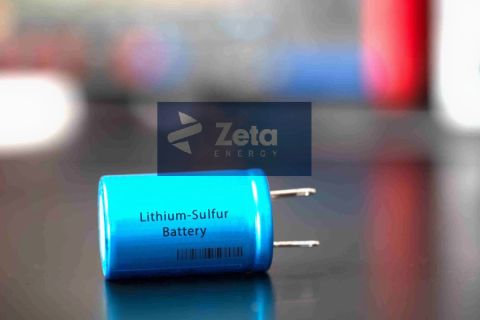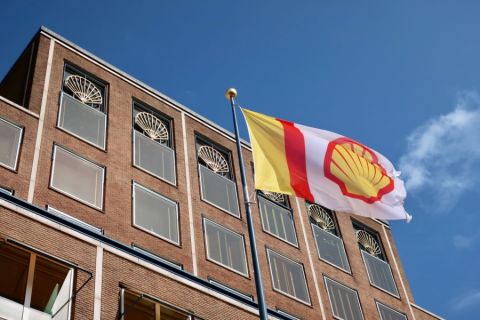After recently completing an important recapitalization, Crosstex Energy announced multiple expansions and partnerships in North Texas' Barnett Shale, the Eagle Ford shale in South Texas, the Permian Basin in West Texas and in South Louisiana. Its focus remains on shale plays and creating value for shareholders.
MIDSTREAM: Last year Crosstex completed its recapitalization plan. Was that done to support growth projects for this year?
Davis: Our focus has always been to provide solutions for our customers. Those solutions most often involve building facilities or infrastructure to move their products to market. As a result, we've always been focused on growth. From 2000 to 2008, we grew at a compound annual growth rate of almost 100% per year. So after the challenges of 2008 and 2009, the recapitalization returned us to a strong financial position so we could continue to provide solutions for our great customers.
MIDSTREAM: Since April, Crosstex has completed gathering projects in North Texas, reactivated a fractionator in southern Louisiana, formed a partnership with Howard Energy in the Eagle Ford, formed a JV with Apache in the Permian Basin, and announced a new-build pipeline extension and fractionator expansion to name a few projects. Why the big growth spurt this year?

Davis: We are really getting back to what we do best. We are well capitalized, well managed, and well positioned from an asset standpoint. We are in the best shape that we've ever been. We are committed to providing midstream solutions for our customers and creating value for our investors and stakeholders. Our industry is in a very robust phase. There is a significant amount of capital being invested. The current forecast is that we will see $6 billion to $10 billion per year invested during the next 20 years, especially in the midstream sector. We may be at the peak of that right now because opportunities are abundant and there is a tremendous need for infrastructure. So when you combine our strength as a company with the state of the industry, then it does provide opportunities for the type of growth we've seen this year.
MIDSTREAM: Which was or will be the most challenging project to complete? Why?
Davis: Our Cajun-Sibon NGL pipeline extension and the expansion of our Eunice facility will be complex in terms of the number of dynamics involved. The pipeline consists of a 130-mile, 12-inch-diameter pipeline, which will be an extension of our 440-mile Cajun-Sibon NGL pipeline that is connected to our Eunice NGL fractionation facility in south central Louisiana. We will also expand the Eunice facility as part of the project. There are a lot of moving parts and a fairly tight time schedule. We want to keep this project on time and on budget so that we meet our customers' needs. It is very much a customer-driven project so we need to complete it in the timeframe that we have established.
MIDSTREAM: What is your growth strategy?
Davis: We have three strategies for growth. The first strategy is to acquire assets that can serve as a platform for growth in new target areas. The second is the organic build of new infrastructure in emerging shale plays. The third is to utilize our existing NGL and crude infrastructure so that we can provide services in new developing regions. There are many opportunities for us in today's environment that relate to these strategies.
MIDSTREAM: What about any expansion in the Permian basin or Eagle Ford?
Davis: Two of our recently announced projects give us entrée into the Eagle Ford and the Permian basin, which will provide multiple opportunities. We perceive those transactions as the first step into new basins, and we have identified a number of additional opportunities that we will pursue thanks to these new platforms.
MIDSTREAM: What are your other objectives?
Davis: We are continuing to explore avenues for growth and expect to add additional areas of operations. Our two overarching objectives for this year are to maximize the growth and profitability of our existing assets and to expand into new areas of operation. Ultimately, we want to increase our scale and become a larger, more diversified company. As a result of asset sales in 2010, we were smaller and more concentrated than we wanted to be, so our focus is to grow and become more diversified in the future. The projects we recently announced have provided a significant step forward in that direction.
MIDSTREAM: Which part of your business has the best growth potential for the next few years—gathering, treating or processing?
Davis: Today the opportunity primarily is in liquids-rich and crude-oil developments. This is quite advantageous for us because our assets are located in rich-gas developments. It also is advantageous for us because we have strong natural gas liquids (NGLs) marketing and processing capabilities and an overall capability to grow.
MIDSTREAM: How has the current market focus on NGLs affected Crosstex's business strategies?
Davis: From a strategic standpoint, our NGL-related projects are the center of the radar for us. Our focus right now is to take advantage of our existing NGL infrastructure and capacity in South Louisiana and the opportunities to access the market from these facilities. The Cajun-Sibon NGL pipeline extension and Eunice fractionator expansion project will connect the rapidly growing NGL supply around the country that is currently being transported to Mont Belvieu with our South Louisiana facilities and petrochemical markets. The Cajun-Sibon project is the ideal foundation for expansion of our integrated NGL system and will optimize our existing assets. It creates great optionality for our customers and gives us the ability to take advantage of increasing demand for fractionation and NGL handling as producers continue to pursue liquids-rich natural gas shale plays. We will be able to offer midstream customers an alternative to Mont Belvieu, which is beginning to be constrained. We think there is value in diversity.
MIDSTREAM: How have the shale plays in general affected your business?
Davis: As a company, Crosstex has been focused on shale resource development for almost 10 years. We were one of the first midstream players in the Barnett Shale. In mid-2006, we made a significant acquisition of gas-gathering pipeline systems formerly owned by Chief Holdings for about $500 million. This acquisition created a platform for us and enhanced our position in what, at the time, was the only U.S. gas shale play. It also created a strong alliance with a significant producer in that area. We paired the assets we acquired from Chief Holdings with our North Texas pipeline, a regional transmission system, to deliver gas to strategic markets in East Texas and to markets in the Northeast and Midwest.
MIDSTREAM: And you have Haynesville assets.
Davis: Our assets are well positioned in Louisiana, where we own one of the largest intrastate pipelines in the state, with over 2,000 miles of pipe. We responded very aggressively to the Haynesville shale play, which was discovered in 2008, and today we provide almost 500 million cubic feet of take-away capacity for the Haynesville shale development. But our Louisiana pipeline system, called LIG, is not just about the Haynesville. We are seeing some additional plays becoming very active. We think that there will be additional shale plays in Louisiana that our LIG system will be strategically positioned to serve. Our recent entrance in the Eagle Ford shale and the Permian basin offers us great business opportunities in those developing shale plays. Today, we are involved in four of the seven largest U.S. shale plays, as a result of our recent entrée into the Permian and the Eagle Ford.
MIDSTREAM: Are the conventional plays still good business for you?
Davis: Unconventional plays are where the action is today and that is where Crosstex's primary focus is. Our focus will continue to be on providing midstream solutions for this rapidly developing source of natural gas in the U.S.
MIDSTREAM: What would you say is the biggest challenge to the midstream industry, in general, and how will that be overcome?
Davis: Our top three challenges include people, competition, and supply and demand for all commodities (gas, NGL and oil). First, as far as people, the midstream sector is a great place to be, and a lot of companies have come into the space. As a result, there has been a big demand for people. Second, we have seen the big getting bigger and we have seen the nonexistent come into existence. We have seen a lot of new entrants into the midstream space and as a result, we are in a very competitive market right now. The good news is there is plenty of opportunity, and I think everybody will find their space and the right place to participate. And third, we are currently suffering from the success of the shale play in the natural gas market. We are concerned about the long-term supply-demand balance for NGLs as we continue to focus on the development of rich gas. It remains to be seen what kind of impact this will have on oil markets.
MIDSTREAM: Do you foresee a decline in NGL prices?
Davis: Our base-case scenario does not see a point where supply outstrips demand. However, a downturn in the economy or a more rapid development than we are anticipating could result in an imbalance in supply that could have a negative impact on pricing. We think this would be primarily focused on the NGL space. We don't think that would happen before 2013. Our current forecast and the forecast of others would indicate that we have some lack of clarity as to where the supply-demand balance will be in 2013.
MIDSTREAM: Going forward, will Crosstex stay in Texas and Louisiana, or might it look at other opportunities, like the Cana-Woodford play in Oklahoma or the Fayetteville in Arkansas?
Davis: Crosstex is focused on expanding our footprint into other regions. We have recently announced two projects in the Permian basin and the Eagle Ford. We are excited about those opportunities and believe this is a great time to expand into new basins because there are many opportunities. Crosstex is very active today in looking at opportunities in all the new shale plays.
MIDSTREAM: Do you have any thoughts or opinions on some of these discussions about exporting LNG?
Davis: There are many opportunities to expand our markets domestically and we are seeing a lot of positive energy in that direction. The current administration has acknowledged the importance of natural gas and the opportunity to expand its use domestically. If we get comfortable that we can meet those demands, then I could see a fit for exportation of natural gas, but I think there is a lot be discussed and it's still very unclear as to whether that will actually happen to any great extent or not.
Recommended Reading
1Q24 Dividends Declared in the Week of April 29
2024-05-03 - With earnings season in full swing, upstream and midstream companies are declaring quarterly dividends. Here is a selection of dividends announced in the past week.
Analyst Questions Kimmeridge’s Character, Ben Dell Responds
2024-05-02 - The analyst said that “they don’t seem to be particularly good actors.” Ben Dell, Kimmeridge Energy Partners managing partner, told Hart Energy that “our reputation is unparalleled.”
Tellurian Reports Driftwood LNG Progress Amid Low NatGas Production
2024-05-02 - Tellurian’s Driftwood LNG received an extension through 2029 with authorization from the Federal Energy Regulatory Commission and the U.S. Army Corps of Engineers.
Zeta Energy Appoints Michael Everett as COO
2024-05-02 - Prior to joining Zeta Energy, a lithium-sulfur battery developer, Michael Everett previously served as president and COO at Advanced Battery Concepts.
Shell Launches $3.5 Billion Share Buyback Program
2024-05-02 - Shell, which posted first-quarter adjusted earnings of $7.7 billion, will cancel all of the shares it buys.





